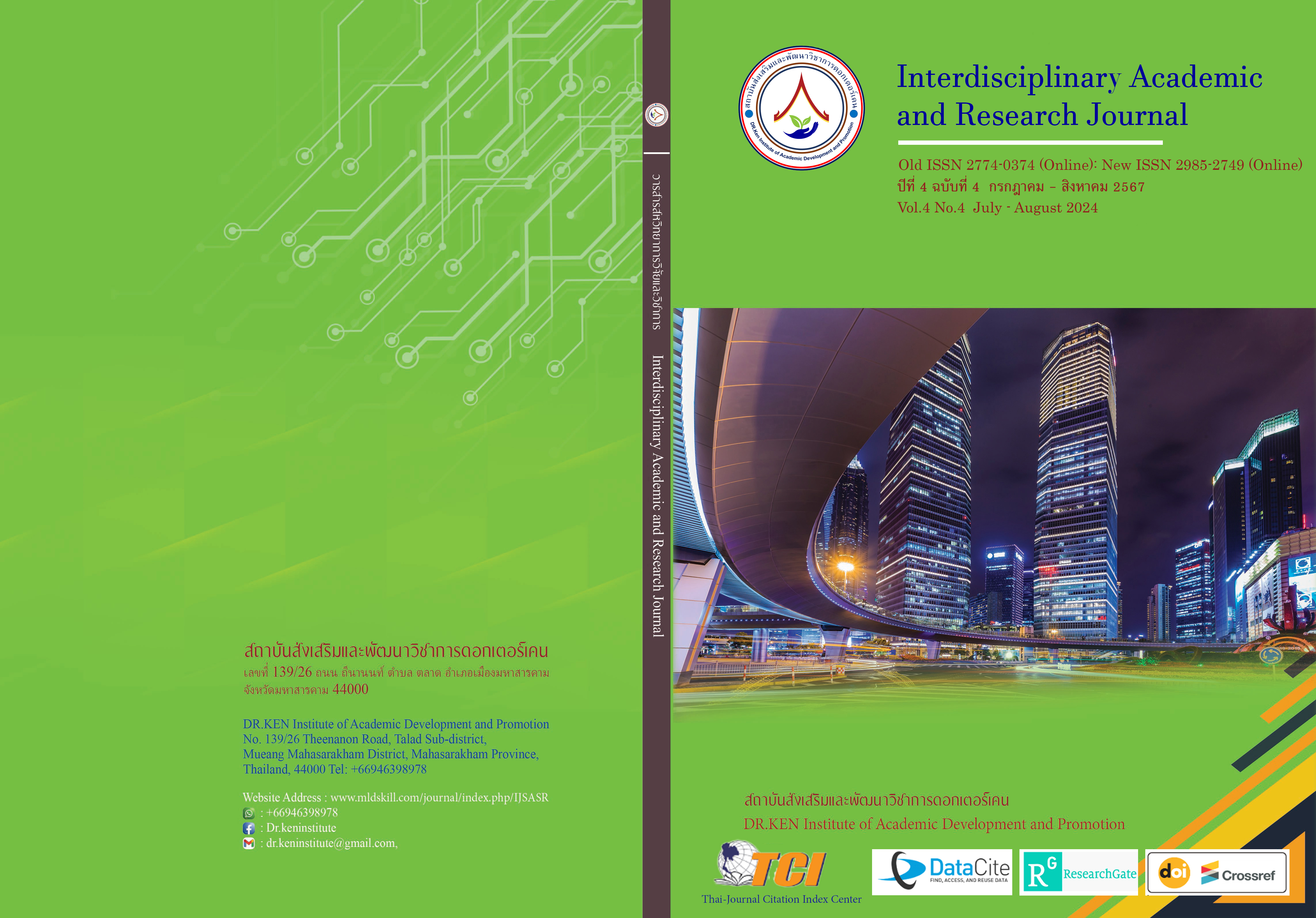Electronic Portfolios (E-Portfolios) for Students in Primary School
DOI:
https://doi.org/10.60027/iarj.2024.277061Keywords:
E-Portfolios; , Students in Primary SchoolAbstract
Background and Aims: Electronic portfolios are an innovation that has been adapted to the lifestyles of modern students. This helps in improving the quality of learning and improving the learning skills of students. It is also a display of learner work that is purposefully collected to depict the student's reflections, progress, and achievement in the given content area. The purpose of this article is to present the concept of electronic portfolios, their characteristics, types, structure, electronic portfolio development process, and evaluation criteria including the benefits and limitations of electronic portfolios for students at the primary school level.
Methodology: This research used qualitative research methods with document research by collecting data from documents and research related to electronic portfolios.
Results: There are a few things to consider when using electronic portfolios in teaching 1) Students should be prepared to be familiar with using the program. 2) The number of tasks should be reduced while still maintaining the quality of the work. 3) Students should be encouraged to develop reflection skills.
Conclusion: Electronic portfolios are helpful for students to evaluate their progress and knowledge abilities, helping them to reflect on their self-reflection.
References
เกษศรินทร์ จันทลา. (2549). การพัฒนาการประเมินผลโดยใช้แฟ้มสะสมงาน กลุ่มสาระการเรียนรู้คณิตศาสตร์: โรงเรียนสะเดาใหญ่ประชาสรรค์สำนักงานเขตพื้นที่การศึกษาศรีสะเกษ. วิทยานิพนธ์ปริญญาโท. มหาวิทยาลัยราชภัฏอุบลราชธานี.
เบญจวรรณ เลิศเมธากุล. (2546). ผลของการให้การบ้านและการให้ข้อมูลย้อนกลับที่มีต่อผลสัมฤทธิ์ทางการเรียน วิชาภาษาไทยของนักเรียนชั้นประถมศึกษาปีที่ 5. วิทยานิพนธ์ปริญญาโท. มหาวิทยาลัยสงขลานครินทร์.
ประกอบ กรณีกิจ. (2552). ผลของระดับความสามารถทางการเรียนรู้และแบบการให้ข้อมูลป้อนกลับในแฟ้มสะสมงาน อิเล็กทรอนิกส์ที่มีต่อผลสัมฤทธิ์ทางการเรียนของนิสิตในวิชาการผลิตสื่ออิเล็กทรอนิกส์เพื่อการศึกษา. กองทุนวิจัยคณะครุศาสตร์ จุฬาลงกรณ์มหาวิทยาลัย.
สมศรี กิติศรีวรพันธุ์. (2543). การประเมินพัฒนาการทักษะการเขียนด้วยแฟ้มสะสมงานของนักเรียนชั้นประถมศึกษาปีที่ 3 โรงเรียนสาธิตแห่งมหาวิทยาลัยเกษตรศาสตร์. วิทยานิพนธ์ปริญญาโท. มหาวิทยาลัยเกษตรศาสตร์.
Barrett, H. (2000). Create your own electronic portfolio. Learning & Leading with Technology, 27(7), 14–21.
Barrett, H. (2008). Categories of ePortfolio Tools. Retrieved from: http://electronicportfolios.org/categories.html.
Billings, D., & Kowalski, K. (2005). Learning Portfolios. Journal of Continuing Education in Nursing, 36(4), 149-150.
Burgess, G.W., & Holmes, B.D. (2000). Producing A Professional Portfolio. Arkansas: Conway Publishing.
Cambridge, D. (2010). Eportfolios for Lifelong Learning and Assessment. San Francisco, CA, USA: Jossey-Bass, A Wiley Imprint.
Center for Teaching Excellence. (2019). e-Portfolio. Retrieved from https://www.cerritos.edu/ic/eportfolio/objectives.htm
Chow, A., Smith, K.M., & Sun, K. (2012). Youth as design partners: Age-Appropriate websites for middle and high school students. Educational Technology & Society, 15(4), 89–103.
Corcoran, J., & Nicholson, C. (2004). Learning Portfolios-evidence of learning: An examination of students’ perspectives. British Association of Critical Care Nursing, Nursing in Critical care. 9(5), 230-237.
Deci, E.L. (1991). Motivation and Education: The self-determination perspective. Educational Psychologist. 3 (4), 325 – 346.
Falchikov (Eds.), Rethinking assessment in higher education: Learning for the longer term (pp. 101–113). London, UK: Routledge.
Forker, E.J., & McDonald, E.M. (1996). Perspective on assessment. Methodology trends in the health care profession: Portfolio assessment. Nurse Educator, 21(5), 9–10.
Garcia-Sanpedro, M.J. (2012). Feedback and feedforward: Focal points for improving academic performance. Journal of Technology and Science Education, 2(2), 77–85.
Hounsell, D. (2007) Towards More Sustainable Feedback to Students. In: Falchikov, N. and Boud, D., Eds., Rethinking Assessment in Higher Education. Routledge, London, 101-113.
Klenowski, V. (1998). Guidelines for portfolio use in initial teacher education. Paper and Monograph Series in Education. Centre for Research and International Collaboration. Hong Kong Institute of Education.
Mertler, C.A. (2001). Designing scoring rubrics for your classroom: Practical Assessment. Retrieved from: http://PAREonline.net/getvn.asp?v=7&n=25.
UC Berkeley. (2020). Research, Teaching, and Learning. Retrieved from https://teaching.berkeley.edu/resources/assessment-and-evaluation/design-assessment/e-portfolio
Weber, K., & Myrick, K. (2018). Reflecting on Reflecting: Summer Undergraduate Research Students' Experiences in Developing Electronic Portfolios, a Meta-High. Impact Practice International Journal of ePortfolio, 8 (1),13-25.
Downloads
Published
How to Cite
Issue
Section
License
Copyright (c) 2024 Interdisciplinary Academic and Research Journal

This work is licensed under a Creative Commons Attribution-NonCommercial-NoDerivatives 4.0 International License.
Copyright on any article in the Interdisciplinary Academic and Research Journal is retained by the author(s) under the under the Creative Commons Attribution-NonCommercial-NoDerivatives 4.0 International License. Permission to use text, content, images, etc. of publication. Any user to read, download, copy, distribute, print, search, or link to the full texts of articles, crawl them for indexing, pass them as data to software, or use them for any other lawful purpose. But do not use it for commercial use or with the intent to benefit any business.
















.png)


